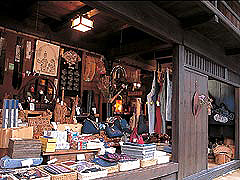
The store is lined with individual folk art. The price is affordable and popular, such as the flower ware 1700 yen with lacquer on the cloth. The lantern of the cypress made by the music craftsman 12,000 yen ~ is a delicate art with beautiful cypresses that can be seen through the lights. All of them have a gentle natural texture. There are also Kiso plant-dyed fabrics, clothing, scarves, handkerchiefs, etc.
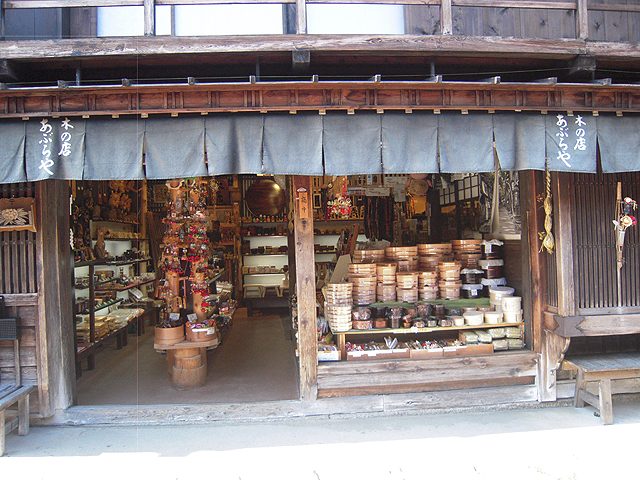
In Kiso Road, which produces good quality timber, woodwork has developed since ancient times. The song that makes use of the characteristics of a cypress that can be thinly peeled off is the secret of the popularity of the scent of wood that makes rice delicious and the breathability for preservation. The potty workings, which make the grain stand out, are also beautiful. Kiso Hinoki, sawara, chopping boards, sushi tubs, etc. are woodwork that are preferred for everyday use. There is a variety of such woodwork products here. Especially Shiraki noodles that can be used in microwave ovens ~ 3500 yen, homemade and hot products. The popular lunch box is also available in various kinds, 2000-9000 yen.
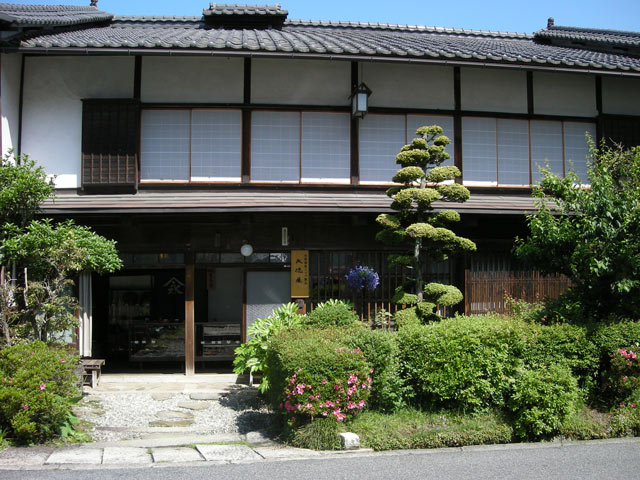
A store of Kiso lacquerware and traditional crafts and Nagiso potter's products. There are a variety of products made by Kiso's craftsmen, such as wooden Urashi-painted bowls, Japanese drinkers, chopsticks, Hinoki-bendered lunch boxes, aquebi-made trays, and flower ware, as well as a nadsume, salad bowl and black persimmon incense.
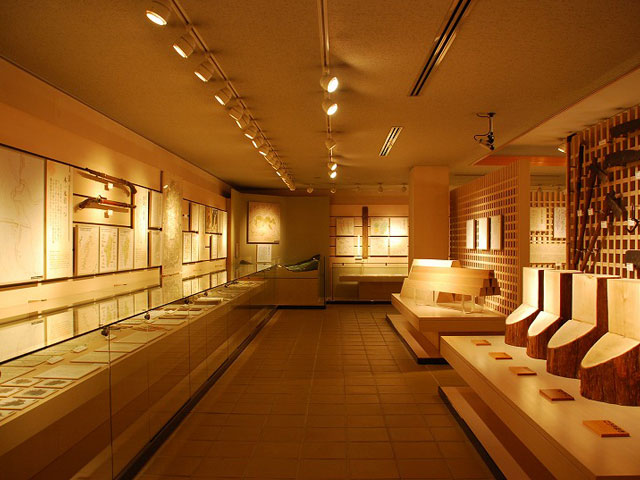
One of the Nagiso-cho Museum The Historical Materials Museum displays about 200 pieces of material, including pottery from the Jōmon period excavated in Nagiso-cho, and folk implements used for mountain work. Introducing the vicissitudes of nature and life from primordial to near-modern times. It is also a must-see material about the preservation of the town that was carried out in the whole country.
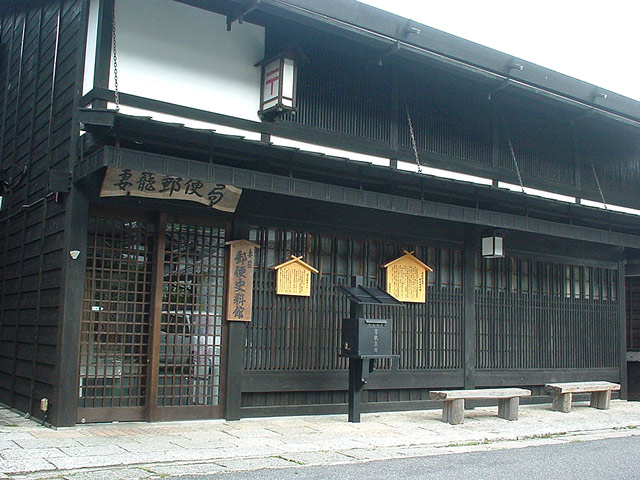
Tzaban post office with a stately wooden architecture that blends into the town of Tsumaban. A small postal historical hall is attached to its interior. A model of the post from 1871 to the present is arranged, and its transition can be seen at a glance. The mail from the old days, the clothes of the delivery husband and the communication [Teishin] bugles carried around are also on display. It takes seven minutes.
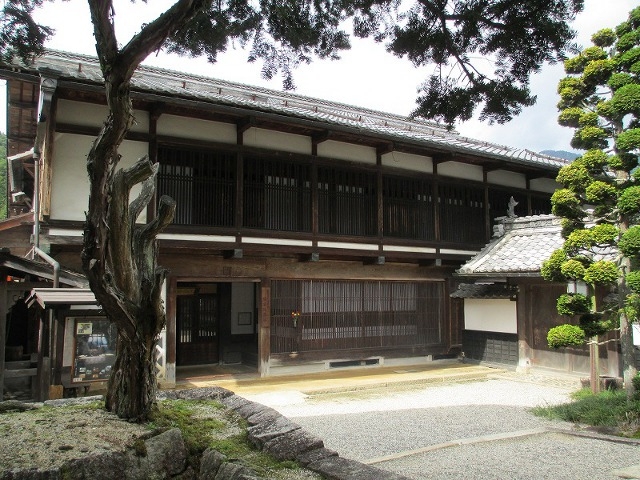
The facility, which serves as the center of the Tsumami-juku tour, introduces the history, life and nature of Nagiso-cho, and consists of three buildings: the extant Wakimoto-tachi Okutani (Important Cultural Property) and the restored Tsumami-juku Honkan, and the Historical Museum, which takes a total of 45 minutes.
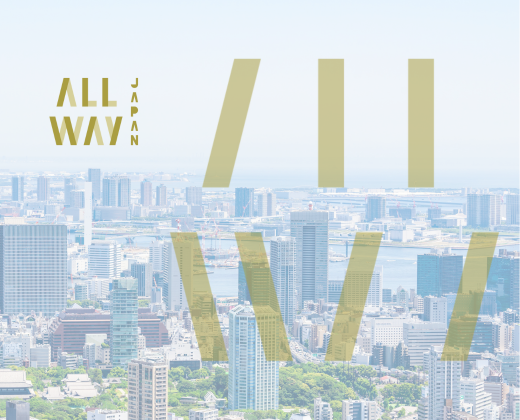
Masugata is a road that breaks into a right angle that is necessarily provided at the doorway of the inn. It is said that the post house, which was once also held by the shogunate to serve as a fortification [bosai] facility, bent the highway twice at right angles to prevent the invasion of foreign enemies. The Masugata of Tsumago is located between 70m from the tourist information center to Shimo-Sagaya, and has been preserved in a clear view of the shape at that time. It is an interesting place to see a glimpse of one part of the rule of the Edo shogunate.
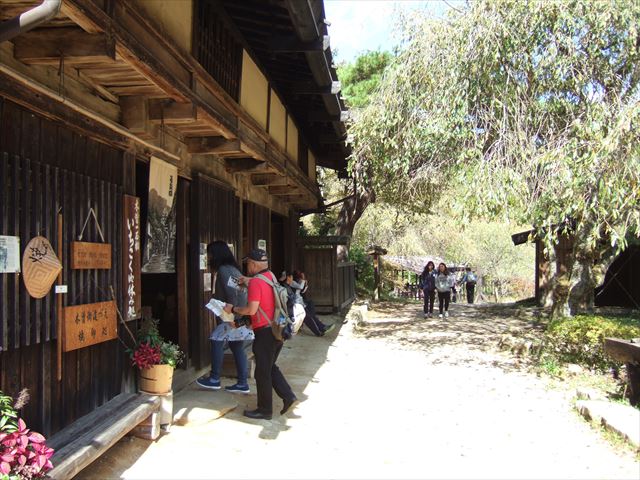
It is surrounded by a deep, green distant view, with Mount Ise to the west and Mount Minamigiso to the east, and the old road of Tsumagon extending north and south. If you walk along the path gently up and down, old-fashioned and nostalgic wooden houses will invite you to the journey of time. The traditional building houses are characterized by a deep depth and two-story building built of Izuyō, and the buildings, which used to be Japanese-style travel and private houses in the Edo period, have been turned into souvenir shops and exhibition facilities, and have retained their appearance in the present day. The main team, which was used by samurai and public houses for lodging and rest, was restored in 1995 based on the floor plan of the late Edo period. Wakimoto Okutani, which was designated as a National Important Cultural Property in 2001, was built to mimic a castle using plenty of cypresses. Let's go to tour by all means.

It is a settlement just south of Tsumago-juku, where the old private houses line up the eaves. The house of Izuyō [Dashibari], which has a large sleeve-buken [Sode-udatsu], creates a scenic landscape.
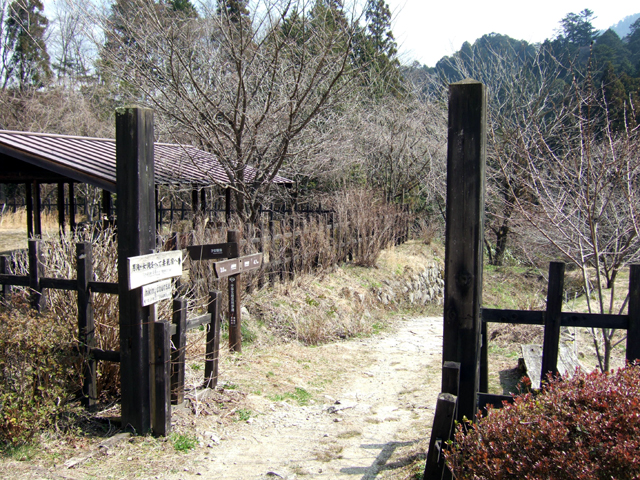
The site of Banshō, which had been monitoring the shipment of banned trees, including the Kiso five trees such as cypress, sawara and others. At that time, the penalties were so severe that bringing out a Kiso tree without permission would be said to be "one tree, one head." it was originally located in the lower valley of Tsumago, but was transferred to Ichiishi Tochi due to a mountain collapse in Kannobu 2 (1749), and the latter control continued until the reversion of the clan in 1869. Now the wooden fence has been restored and the marking plate has been raised.










